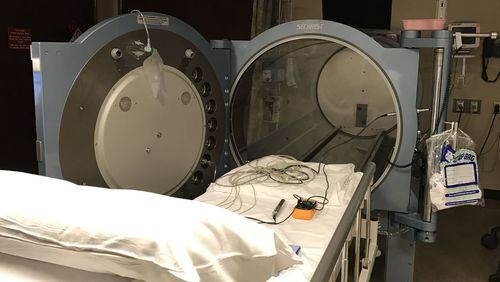KANSAS CITY, Kan. — Cindy Burns developed nausea and a terrible headache while staying at her sister’s house in Kansas City, Kan., last month.
She felt so bad, all she wanted to do was sleep. Fortunately, her brother-in-law asked firefighters at a nearby station to check the house. They measured high levels of carbon monoxide in the bedroom Burns had been using.
“They said the level … was way off the chart,” said Burns, of Melvern, Kan. “They kept telling me how fortunate I was.”
Fortunate, that is, that the situation didn’t end up worse.
Accidental carbon monoxide poisonings send about 20,000 people a year to U.S. hospital emergency rooms, said Mark Scott, an emergency medicine physician at the University of Kansas Hospital. About 400 to 500 of them die, he said.
“The thing about this is, almost all of these (injuries and deaths) are preventable,” Scott said, citing the need for homeowners to install carbon monoxide detectors that can cost as little as $20 each.
Last month, KU treated four patients for carbon monoxide poisoning, the hospital’s highest number in 17 months, records show. Because the gas is colorless and odorless, it sneaks up on people.
“You don’t even know it’s there until the symptoms are on you,” Scott said. “It absolutely can kill you.”
Symptoms include headache, nausea, dizziness, vomiting, chest pain and confusion. Some victims think they have the flu. Some pass out and never wake up as the lack of oxygen affects their brain and heart.
Faulty exhaust systems for gas furnaces or gas water heaters can cause carbon monoxide to build up in a home. So can a car left running in the garage and fireplaces used when the flue is closed.
Gas generators placed indoors can be deadly, too. During the area’s 2002 ice storm, which caused widespread power outages, Kansas City reported 31 carbon monoxide incidents in a single week caused by improperly installed generators.
Victims who experience severe exposure are treated in one of KU’s two hyperbaric chambers, machines people typically associate with treating deep-sea divers who’ve surfaced too fast. The machines have many other uses, including quick reduction of carbon monoxide levels in a patient’s blood.
Usually, such patients are sent on three “dives” within a 24-hour period, Scott said. The first will be the deepest, equal to the pressure felt during a 50-some-foot dive into sea water.
The treatments helped her, Burns said.
“By the time I got home, it was a lot better, but I still had a little bit of a headache,” she said.
Her sister and brother-in-law were not affected because a separate furnace heated the part of the house where they slept, Burns said. A downdraft near the older furnace heating her bedroom pushed the carbon monoxide down instead of letting it vent, she said.
Her advice? Everyone should install a carbon monoxide detector.
“That’s the first thing we did when we got home,” she said.
About the Author






